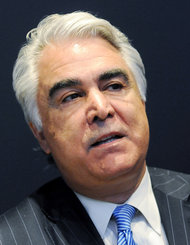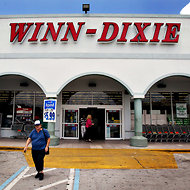The ruling by Judge Allan L. Gropper of the Federal Bankruptcy Court for the Southern District of New York puts Kodak on track to exit bankruptcy in about two weeks.
“It will be enormously valuable for the company to get out of Chapter 11 and hopefully begin to regain its position in the pantheon of American business,” Judge Gropper said.
Kodak, based in Rochester, was for years synonymous with household cameras and family snapshots. It filed for bankruptcy protection in January 2012, weighed down by high pension costs and a delay of years in embracing digital camera technology.
Kodak’s chief executive, Antonio M. Perez, said in a statement, “We move on to emergence as a technology leader serving large and growing commercial imaging markets.” He said the company would have a leaner structure and a stronger balance sheet.
Kodak has sold assets, including its consumer operations, and will now focus mainly on commercial products like high-speed digital printing technology and flexible packaging for consumer goods.
In bankruptcy, Kodak failed to obtain significant value for its portfolio of patents. Experts said that was a crucial reason it had to sell core businesses and reinvent itself. But the bankruptcy resolved a major dispute with retirees over pensions, and it has forged a restructuring plan that, while wiping out shareholders, should pay secured creditors and second-lien noteholders in full.
General unsecured creditors are likely to receive a marginal payout in the neighborhood of 4 to 5 cents on the dollar.
“This comes on a day when many are losing retirement benefits and many are finding that their recovery as a creditor is just a minute fraction of what their debt is,” Judge Gropper said. “But I cannot decree a larger payment for creditors or any payment for shareholders if the value is not there.”
Kodak plans to emerge from bankruptcy as early as Sept. 3, its lawyer, Andrew Dietderich, said at a hearing in bankruptcy court.
Kodak’s bankruptcy capped a protracted plunge for the company, which was founded in 1880 by George Eastman, the inventor of the hand-held camera and rolled photographic film. Kodak’s market value topped $31 billion in the mid-1990s.
When it filed for bankruptcy, it hoped to fetch more than $2 billion for about 1,100 patents related to digital imaging. But partly as a result of losses in patent litigation with Apple, the company was able to sell the portfolio for only about $525 million to an alliance led by Intellectual Ventures and the RPX Corporation.
The company sought other ways to save money. In April, it resolved a crucial dispute with its British pension, which dropped a $2.8 billion claim against Kodak while buying the company’s personalized imaging and document imaging businesses for $650 million.
The company reached an $895 million financing deal in June with JPMorgan Chase, Bank of America and Barclays. It is also planning a $406 million rights offering, selling 34 million shares, or 85 percent of the equity in the reorganized company, with proceeds going to creditors.

Article source: http://www.nytimes.com/2013/08/21/business/court-gives-kodak-approval-to-leave-bankruptcy.html?partner=rss&emc=rss






